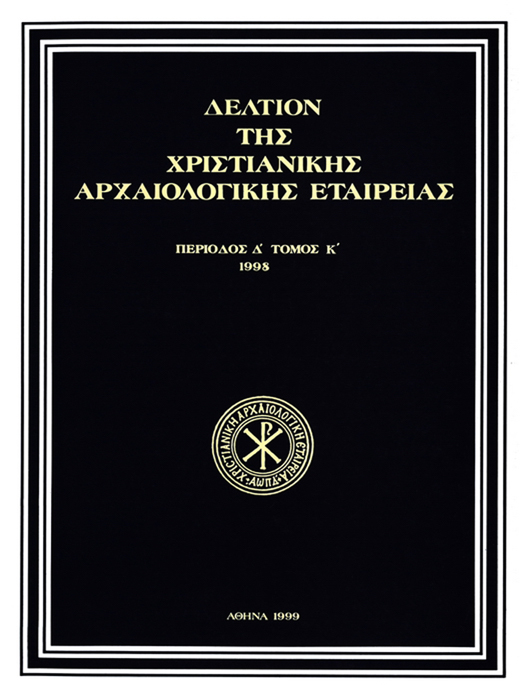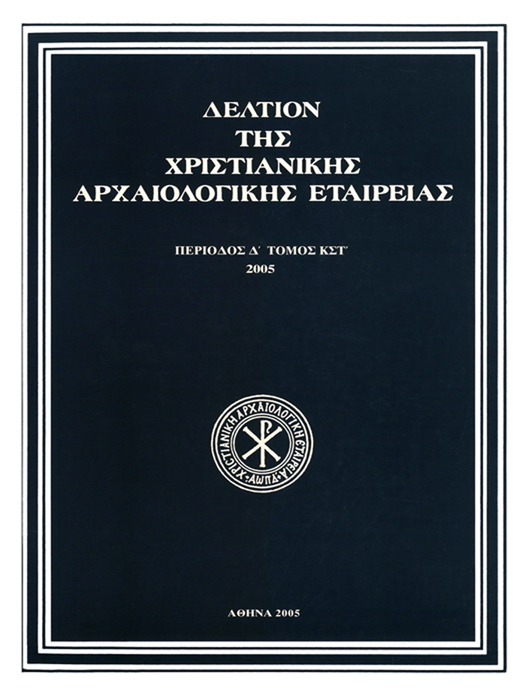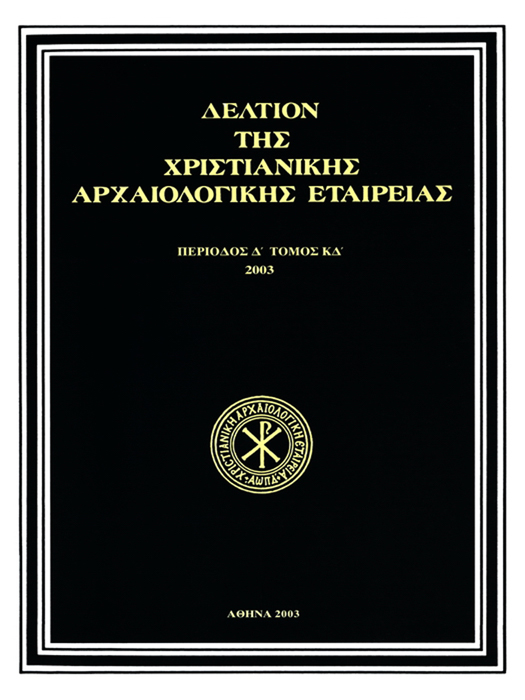The church of Hagios Ioannes Eleimon at Ligourio (pl. 1-6)
Abstract
The church of Hagios Ioannes at Ligourio in Argolis, west of Epidavros, has been inadequately known. H. Megaw dated the monument in the last quarter of the 11th century, and published the most important part of its brickwork decoration in his comparative study on middle Byzantine churches in Greece. No mention of this monument in historical sources has been known so far. However it might belong to a small monastery. It has a domed cross - in - square plan, of the two - column variation, which became quite popular in middle-Byzantine Greece. The proportions of the plan and the section, reveal certain geometric relations which presupose planning. The narthex seems to have been added after the completion of the main church. The arched iconostasis of the narthex as well as the shallow niches of the piers in front of the bema should be considered as original features. The masonry is made out of bick and stone. Most of the large blocks seem to be in second use, brought over from the nearby shrine of Epidavros. However the masonry lacks the technical skill exhibited in most of the important middle-Byzantine churches of Greece. Domes and vaults are made out of regularly cut stone according to the Helladic constructional methods which were considerably improved during the 12th century. The original form of the cornice remains unknown, as well as the exact form of the «pseudo-athenian» dome which must have fallen partly to be restored in its present form. Although the dome retains the curved cornices, the octagonal drum, and the four windows on the main axes, it has no corner shafts. A part of an epistylion of a templon, immured in the apse window might belong to the church. The lack of any other indication of sculptural decoration reveals the limited economic standards of its founders. The brickwork decoration of Hagios Ioannes exhibits a variety of degenerated coufesque elements, cut bricks, phialostomia (quatre foil pottery ornaments), and plain brick patterns, which seem to have been copied from different monuments in an effort to enrich the decoration of the church. This conclusion is being related to the dating of the monument which cannot vary considerably from the dating given by Megaw (last quarter of the 11th century). Unfortunately most of the fresco decoration of the monument has been lost. The surviving remains of frescoes might be dated in the 12th century. The narthex walls retain a number of sgraffiti ships. One of the inscriptions carved on a large block of the north façade reads as follows «Oh Lord, assist Thy servant Theophylactos the mason from the island of Keos». This inscription might refer to the architect responsible for the erection of the church. In any case, the inscription offers the name and the origin of a mason, which is quite exceptional in the usual anonymity of Byzantine builders.
Article Details
- How to Cite
-
ΜΠΟΥΡΑΣ Χ. (1974). The church of Hagios Ioannes Eleimon at Ligourio (pl. 1-6). Deltion of the Christian Archaeological Society, 7, 1–30. https://doi.org/10.12681/dchae.826
- Section
- Articles
The copyright for articles in the journal Deltion of the Christian Archaeological Society (henceforth Deltion) is retained by the author(s), with first publication rights granted to the journal and to EIE/ EKT the right to store and communicate these articles to the public via its information infrastructures. By virtue of their appearance in this journal, articles are free to use with proper attribution for non-commercial uses under a ShareAlike obligation. The Christian Archaeological Society and EIE/EKT retain the worldwide right to reproduce, display, distribute, and use articles published in the Deltion in all formats and media, either separately or as part of collective works for the full term of copyright. This includes but is not limited to the right to publish articles in an issue of the Journal, copy and distribute individual reprints of the articles, authorize reproduction of articles in their entirety in another publication of the Christian Archaeological Society, and authorize reproduction and distribution of articles or abstracts thereof by means of computerized retrieval systems.













